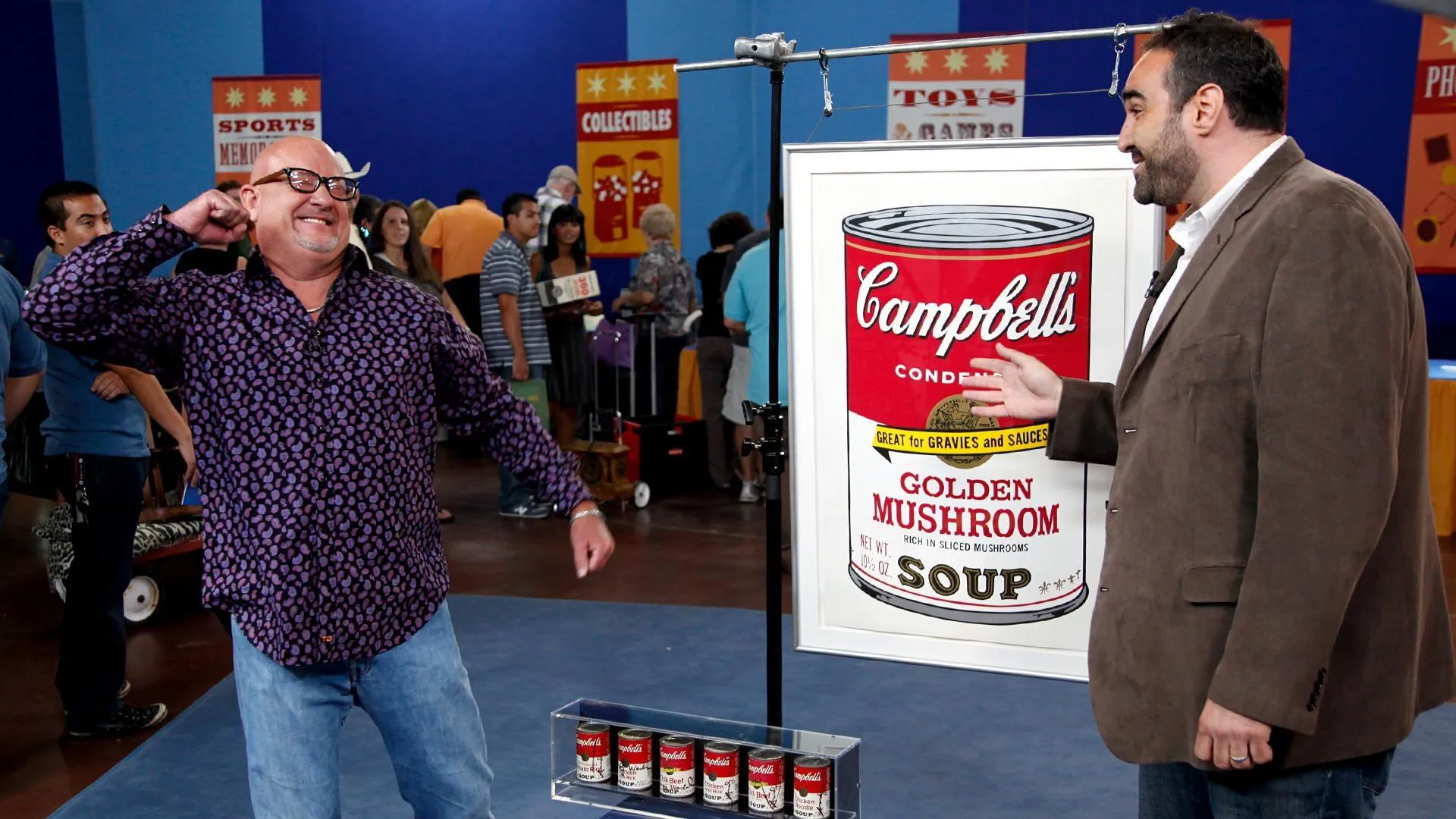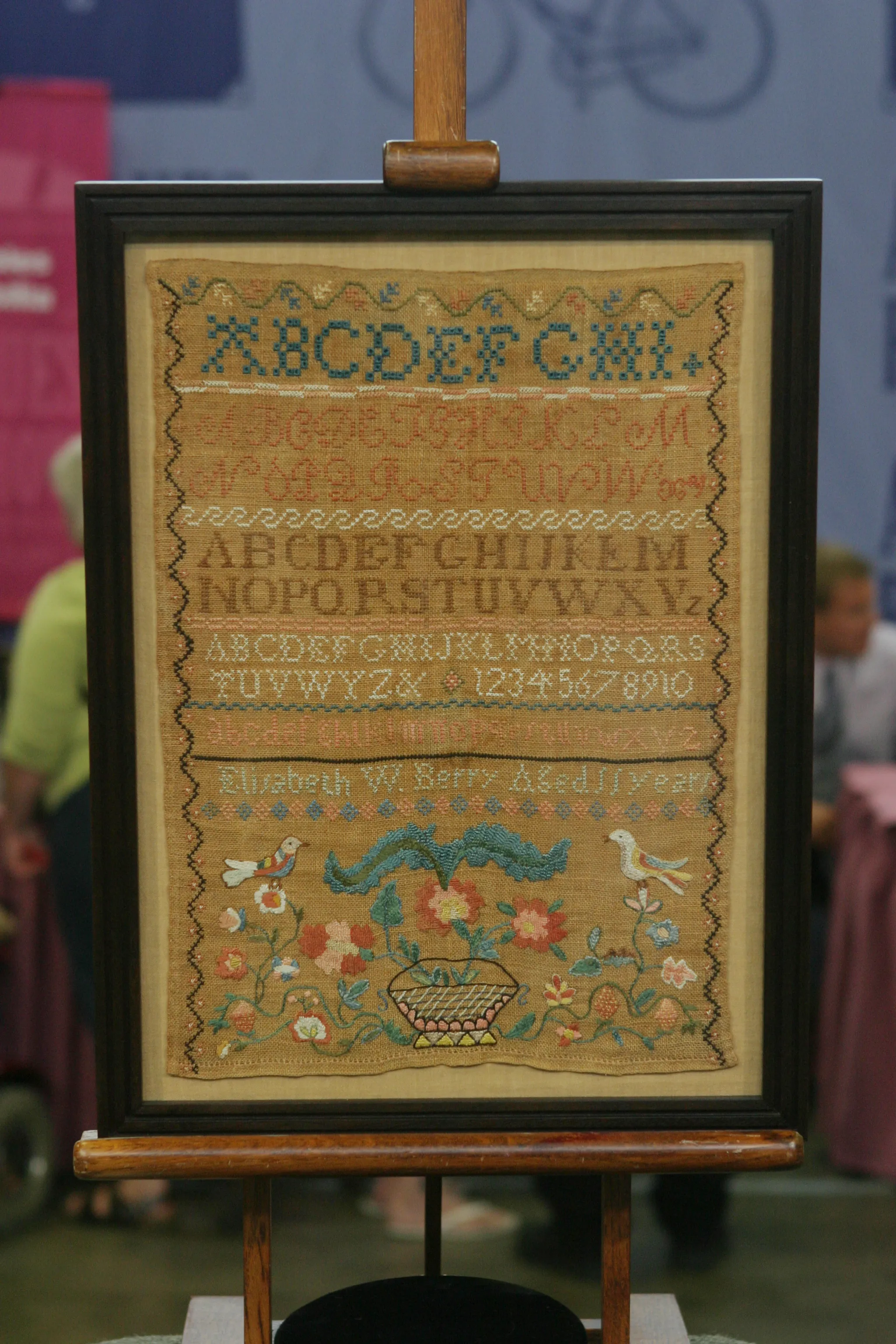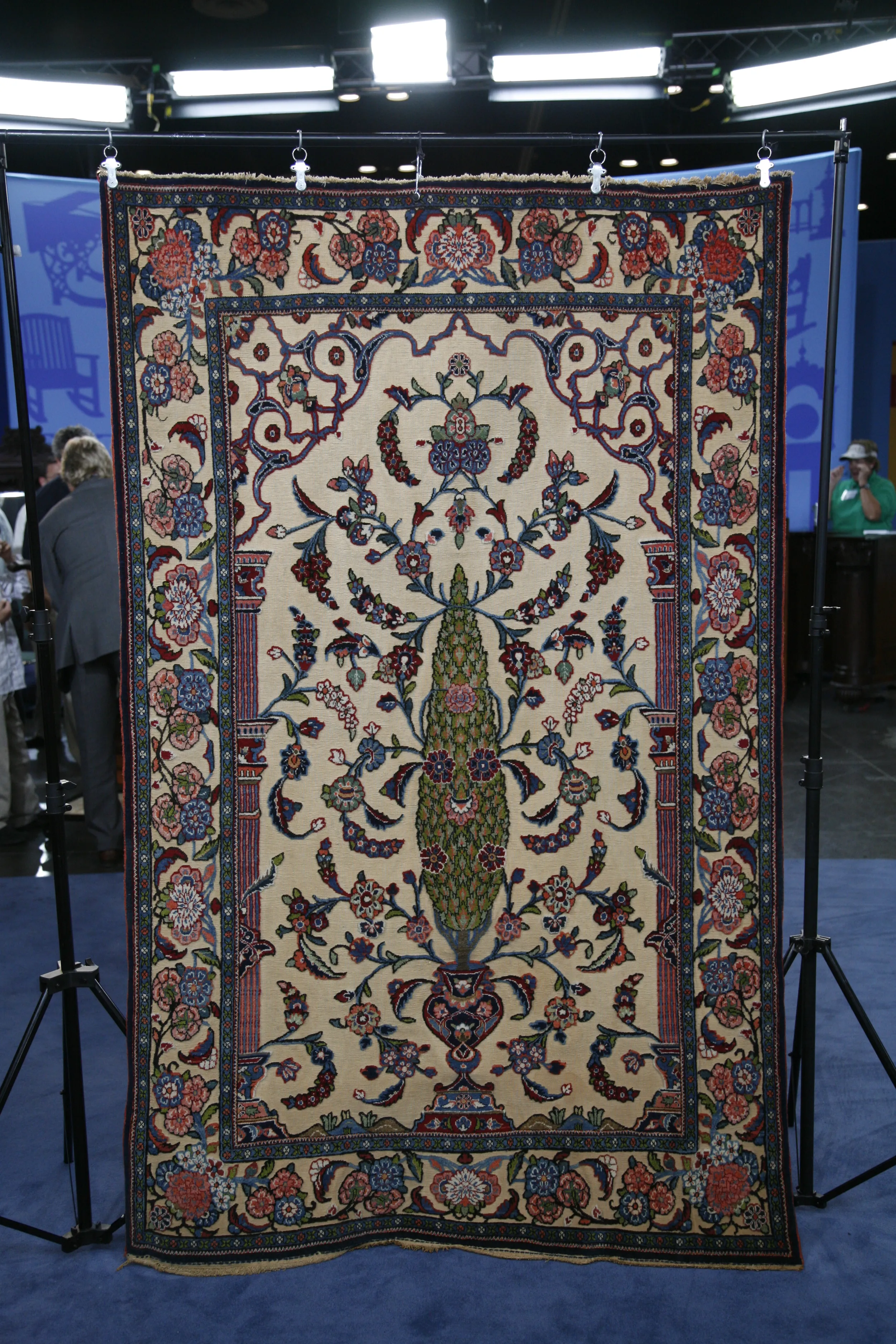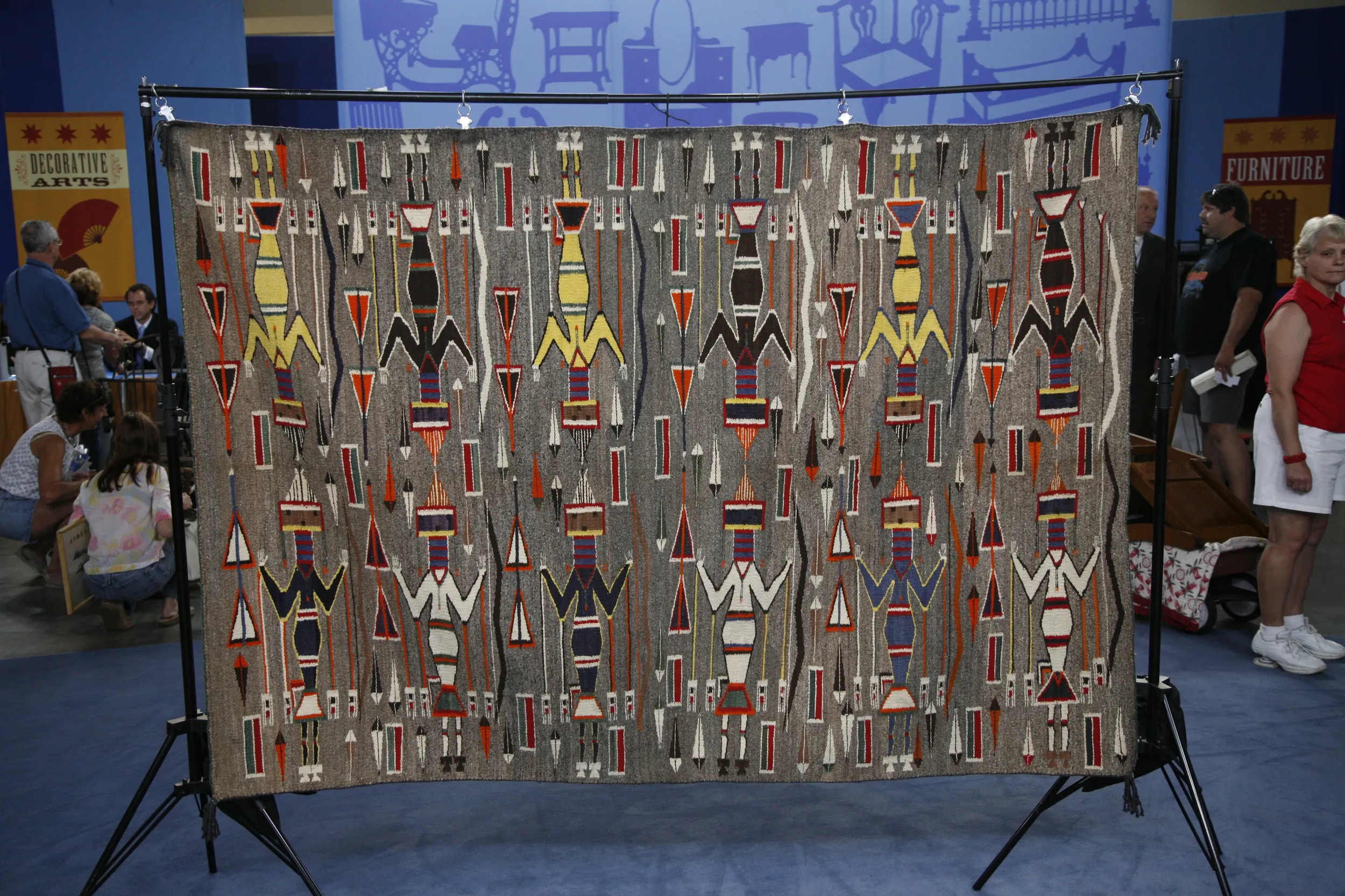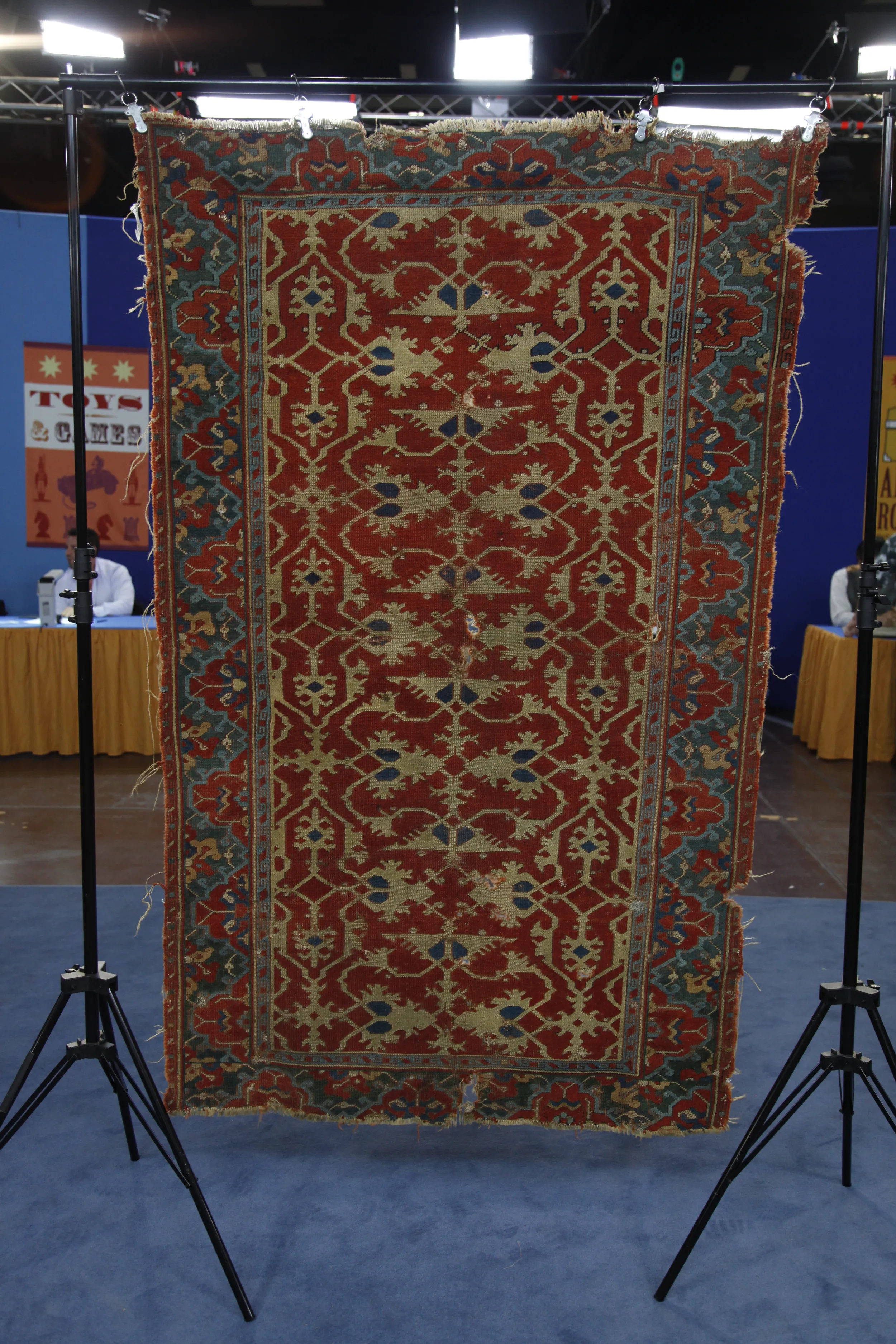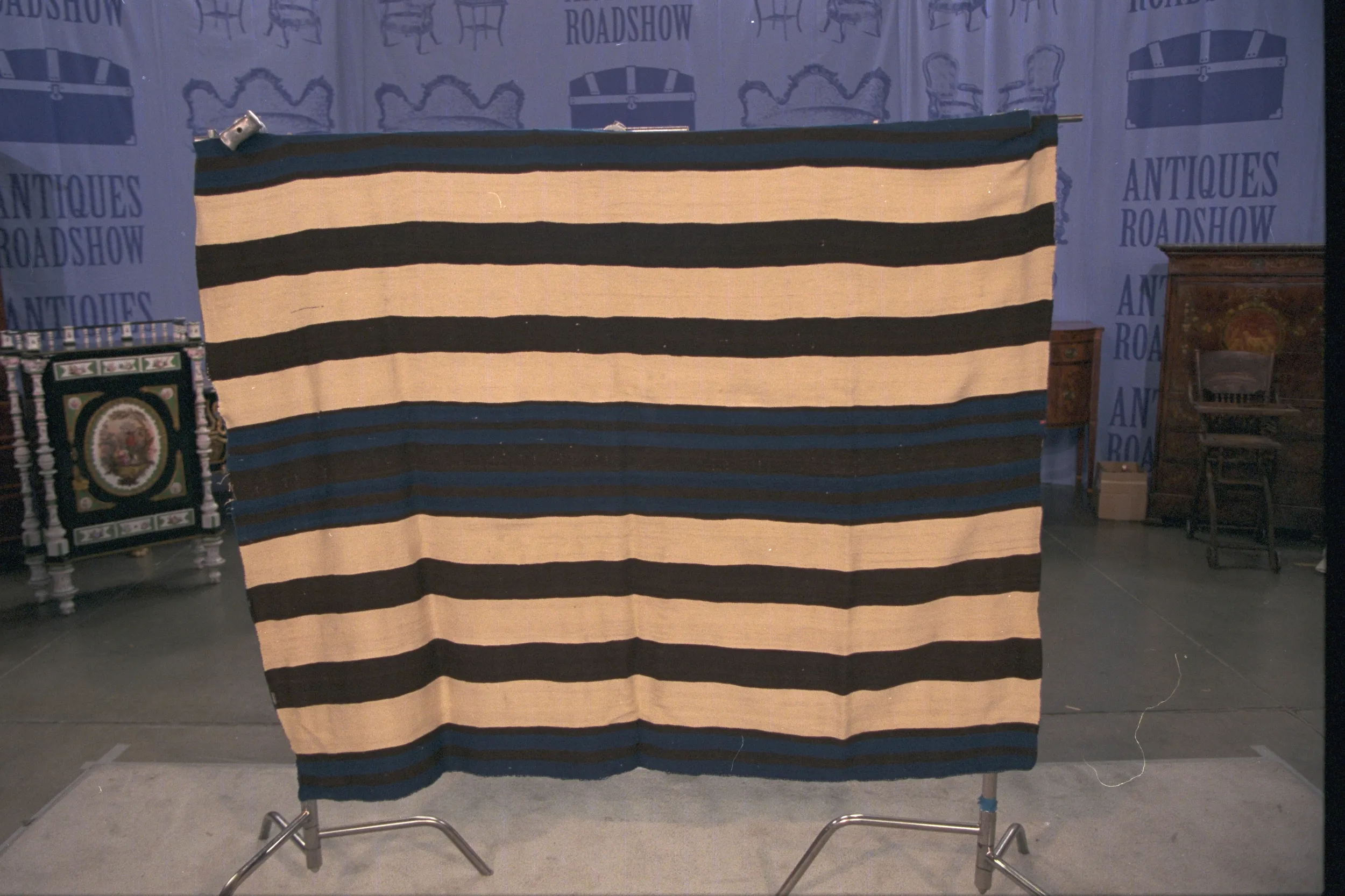GUEST: It is part of a collection of my father's great-uncle, Saul. And he collected oriental rugs. A few years ago, I was trying to gather some rugs for our house because we didn't really have any, and my mother said, "Some of your Uncle Saul's rugs are in the attic, go look, and you can have one or two." And so I picked this one, and then when I got it home, I noticed that it had holes and that kind of thing, and I thought, "Well, I can't put it on the floor and walk on it, and I can't afford to repair it and have parts of it rewoven," so I had it cleaned at a rug store, and then I rolled it up and put it under the bed.
APPRAISER: Despite what looks like flaws and problems, you picked a good one.
GUEST: Good!
APPRAISER: Do you know anything about its history, what it's called?
GUEST: All I know is what is written on the back of it, on the linen tag. And I don't even know how to pronounce... is it "Oh-shook"?
APPRAISER: Oushak.
GUEST: Oushak, okay.
APPRAISER: Which is in Turkey.
GUEST: Oh, it's in Turkey?
APPRAISER: Yeah, it's a region in Turkey that made rugs. It's an Oushak of a very particular type called a Lotto Oushak. Lotto, L-O-T-T-O.
GUEST: Okay.
APPRAISER: And it's named after an Italian painter named Lorenzo Lotto, who worked in the 15th and 16th century. And the reason why we know it as a Lotto Oushak in the West is the painter, Lorenzo Lotto, used these as backdrops in many of his paintings.
GUEST: Oh, okay.
APPRAISER: This yellow design you see here is a very stylized, typical Islamic arabesque that you see in various forms in other carpets, but it was really popular in Lotto's painting. He was a 16th-century painter, so what date do you think the rug is?
GUEST: I don't know, but is that why it's all dried out?
APPRAISER: Yeah, it's a 16th-century rug.
GUEST: No way! Oh, my gosh!
APPRAISER: And I've got to tell you, my heart skipped a beat when you came in today. I thought, "Oh, boy!" (laughs) You don't see many 16th-century rugs anywhere, outside of museums or very famous collections.
GUEST: Oh, yeah.
APPRAISER: So despite the problem, this is a beauty. It's got wonderful color, it's got tremendous drawing, the weaver really knew what she was doing in weaving this. It's got a fairly rare border type-- it's a reciprocal arcade-- and this wonderful green color. Green is a fairly unusual color to see in carpets. It was a hard color to dye. The brown dyes that you see here have probably been restored at some point, but originally all of this would have been outlined in this dark brown. But dark brown dyes have a really high iron content, and when that's exposed to oxygen, it rusts and it corrodes away the wool. The dye stuff has just eaten out the wool and kind of made this recessed pattern. Do you have any sense of what it may be worth?
GUEST: I haven't. (laughs) Except for the value written on the back, which says $350, which I'm assuming is what he paid for it.
APPRAISER: In today's market, at auction, I would conservatively estimate this at $30,000 to $40,000.
GUEST: Oh, my gosh.
APPRAISER: And that's really conservative.
GUEST: Oh, wow. I think I should give it back to my mother. (laughs)
APPRAISER: Well, you know, I don't think it should go back in the attic.
GUEST: I know! Or under the bed.
APPRAISER: And I also think, in terms of the condition, it's not something I would even try to restore. How you'd use this today would be to mount it on a linen backing, have that stretched on a picture stretcher, and just display it on the wall, because it's really a wonderful, wonderful thing.
GUEST: I didn't realize it was that wonderful!
APPRAISER: It's pretty wonderful. If this rug was in better condition, had really most of its sides intact, didn't have a few of the holes, the value would be on a very different scale. We'd really be looking at probably $250,000 to $350,000 today.
GUEST: Oh, my goodness. Wow.

